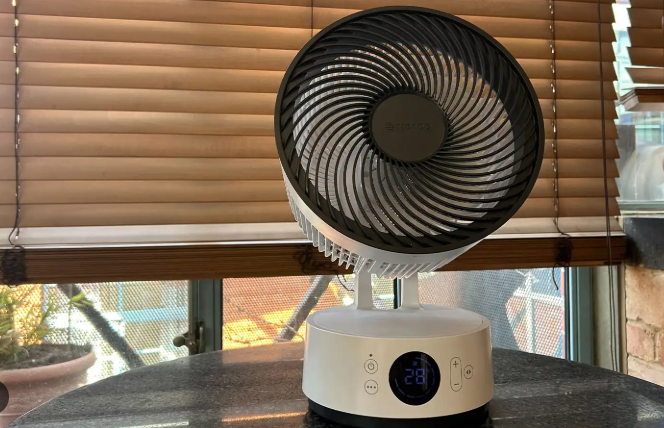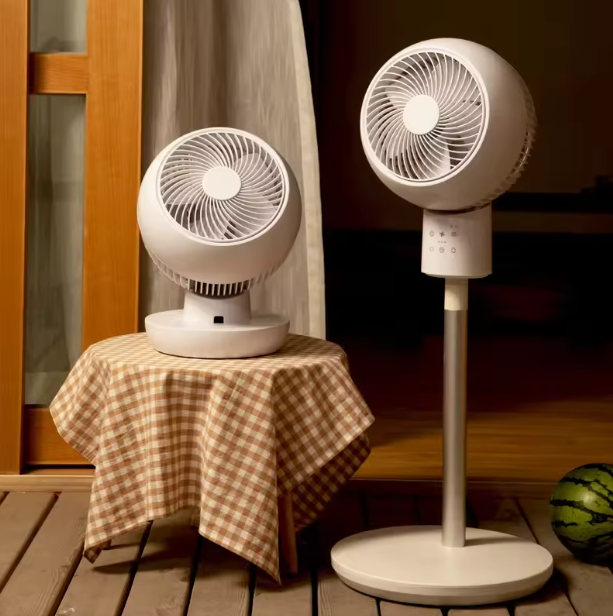The future of electric fan technology is poised to redefine cooling with groundbreaking advancements that prioritize efficiency, sustainability, and user-centric design. As global temperatures rise and smart home integration becomes standard, the next generation of electric fans promises to deliver powerful airflow with minimal environmental impact. In this comprehensive best electric fan guide, we explore the cutting-edge trends shaping the future of electric fan technology, from AI-driven controls to eco-friendly materials. We’ll highlight how these innovations enhance performance, integrate practical electric fan tips for optimal use, and emphasize electric fan maintenance to ensure longevity. For those eager to stay ahead of the curve, our electric fan resource offers insights into adopting these technologies. Prioritizing electric fan safety remains essential as fans become smarter and more powerful.
Electric fans have evolved far beyond their 19th-century origins, with 2025 marking a pivotal year for innovations in electric fans. Driven by consumer demand for energy efficiency and environmental consciousness, manufacturers are integrating IoT, solar power, and advanced aerodynamics. This guide draws from 2025 industry trends and expert analyses to forecast the future of electric fan technology, covering how to use an electric fan with new features, electric fan troubleshooting for smart systems, and electric fan cleaning to maintain cutting-edge performance. Safety-first designs ensure these advancements are practical for all households.
Why the Future of Electric Fan Technology Matters
The future of electric fan technology is critical in a world facing climate challenges and rising energy costs. Modern fans already use 80% less power than air conditioners, and 2025 models aim to cut consumption further through brushless DC motors and AI optimization. These advancements align with global sustainability goals, reducing carbon footprints while cooling spaces up to 1,000 sq ft effectively. For electric fan setup, smart fans with sensors can auto-adjust to room conditions, saving energy. Regular electric fan maintenance, like updating software or cleaning sensors, keeps these systems efficient. This guide explores how these trends make fans indispensable, with more at https://electricfanatic.com/.
Top Innovations Shaping the Future of Electric Fan Technology
The future of electric fan technology hinges on transformative features that blend performance with eco-consciousness. Below are the key trends driving 2025 and beyond, based on market insights and technological advancements.
1. AI and IoT-Enabled Smart Fans
Artificial intelligence and Internet of Things (IoT) integration are revolutionizing innovations in electric fans. Smart fans, like those from Dyson or Midea, use sensors to monitor temperature, humidity, and occupancy, adjusting speeds in real-time to save up to 40% energy. Voice control via Alexa or Google Assistant and app-based scheduling enhance convenience.
Pros: Automated cooling, remote access, energy savings. Cons: Higher cost (~$150-$400), Wi-Fi dependency.
For how to use an electric fan, sync with smart home hubs for seamless operation. If connectivity lags, electric fan troubleshooting suggests restarting the app or router. Clean sensors bi-weekly for electric fan maintenance to ensure accuracy. Auto-shutoff boosts electric fan safety.
2. Bladeless Technology Advancements
Bladeless fans, a hallmark of the future of electric fan technology, amplify air up to 15 times through aerodynamic loops, delivering smooth flow at 350L/s. 2025 models incorporate UV purification and customizable oscillation for targeted cooling.
Pros: Safe for kids/pets, quiet (25-35dB), easy cleaning. Cons: Premium price ($300+), less airflow for large spaces.
Electric fan tip: Use narrow oscillation for desks. Wipe surfaces for electric fan cleaning. Reset electronics for oscillation issues in electric fan troubleshooting. Bladeless design enhances electric fan safety.
3. Brushless DC Motors (BLDC)
BLDC motors are a cornerstone of innovations in electric fans, reducing energy use by 50-70% compared to AC motors while extending lifespan to 10+ years. They offer precise speed control and quieter operation (as low as 25dB).
Pros: Eco-friendly, durable, silent. Cons: Higher initial cost.
Optimize electric fan setup with low-speed settings for all-day use. Lubricate bearings annually for electric fan maintenance. Motor stalls? Check power supply in electric fan troubleshooting. Stable bases ensure electric fan safety.
4. Solar-Powered and Portable Designs
Solar-powered portable electric fans are a growing trend in the future of electric fan technology, with 2025 models featuring foldable designs and 24-hour lithium-ion batteries for off-grid cooling, ideal for outdoor or remote use.
Pros: Sustainable, versatile, battery-backed. Cons: Solar dependency, recharge time.
Place in sunlight for how to use an electric fan off-grid. Clean panels for electric fan cleaning. Battery drain? Full charge resolves electric fan troubleshooting. Anti-tip features uphold electric fan safety.
5. Air Purification and Health Integration
Combining HEPA or UV filtration, these innovations in electric fans clean air while cooling, capturing 99.97% of pollutants for allergy-friendly homes.
Pros: Dual-purpose, health-focused, quiet. Cons: Filter replacement costs.
Run auto-mode for electric fan tips. Replace filters quarterly for electric fan maintenance. Weak purification? Reset filters in electric fan troubleshooting. Child-safe grilles for electric fan safety.

6. Noise Reduction Technologies
Advanced aerodynamics and vibration-dampening make 2025 fans nearly silent at 20-30dB, a key innovation in electric fans for bedrooms and offices.
Pros: Whisper-quiet, efficient. Cons: Slightly pricier motors.
Use night mode for how to use an electric fan. Vacuum blades for electric fan cleaning. Noise spikes? Tighten parts in electric fan troubleshooting. Secure mounts for electric fan safety.
7. Sustainable Materials and Eco-Designs
The future of electric fan technology embraces recycled plastics and biodegradable components, reducing environmental impact while maintaining durability.
Pros: Green footprint, cost-effective long-term. Cons: Limited high-end designs.
Elevate for electric fan setup. Dust eco-materials gently for electric fan maintenance. Power issues? Check wiring in electric fan troubleshooting. Eco-safe builds enhance electric fan safety.
8. Hybrid Multi-Functional Fans
Fans combining cooling, heating, or lighting (fandeliers) save space and energy, a versatile innovation in electric fans for year-round use.
Pros: Multi-use, stylish. Cons: Complex installation.
Program timers for electric fan tips. Clean dual components for electric fan maintenance. Flickering lights? Inspect connections in electric fan troubleshooting. Stable fixtures for electric fan safety.
9. High-Velocity Industrial Applications
High-velocity low-speed (HVLS) fans for warehouses move 20,000 CFM quietly, a robust innovation in electric fans for 2025 industrial needs.
Pros: Massive coverage, efficient. Cons: High setup cost.
Ceiling mounts optimize electric fan setup. Annual blade wipes for electric fan cleaning. Vibration? Balance in electric fan troubleshooting. Heavy-duty guards for electric fan safety.
10. Wearable and Micro Fans
Portable neck and wearable fans, with 1800mAh batteries, cater to personal cooling, a niche in the future of electric fan technology for on-the-go users.
Pros: Ultra-portable, customizable. Cons: Limited range.
Charge fully for how to use an electric fan. Wipe gently for electric fan cleaning. Battery faults? Reset in electric fan troubleshooting. Compact design ensures electric fan safety.
Future-Proofing Electric Fan Setup and Usage
Maximizing the future of electric fan technology starts with smart electric fan setup. Place IoT fans centrally for sensor accuracy; angle HVLS units downward for industrial coverage. How to use an electric fan with smart features involves syncing with apps for schedules or voice commands. Electric fan tips: Pre-cool rooms with timers to save power. For portable electric fan models, use USB charging for mobility, securing cords to avoid trips.
Discover advanced setups at maintenance tips for future-ready cooling.
Electric Fan Cleaning and Maintenance: Future-Ready Care
Maintaining innovations in electric fans requires diligence. For electric fan cleaning, unplug and wipe smart sensors or bladeless loops bi-weekly; vacuum HVLS blades quarterly. Update firmware for electric fan maintenance to keep AI features sharp, reducing 90% of performance issues. Use mild soap to avoid damaging eco-materials.
Troubleshooting Future Electric Fan Technologies
Smart fan glitches? Reboot apps in electric fan troubleshooting. Weak airflow? Clear filters or vents. Overheating signals neglected electric fan maintenance—clean promptly. Solar models not charging? Ensure panel exposure. These steps keep advanced fans running smoothly.
Electric Fan Safety: Navigating New Technologies
The future of electric fan technology demands robust electric fan safety. Unplug before electric fan cleaning, use grounded outlets, and select auto-off models. Bladeless and wearable fans minimize risks, while HVLS units need secure mounts. Keep smart fans away from water to protect electronics.

Conclusion: Embracing the Future of Electric Fan Technology
The future of electric fan technology is bright, with AI, BLDC motors, and sustainable designs leading the charge in 2025. This best electric fan guide showcases how these innovations in electric fans promise smarter, greener cooling. By adopting electric fan tips, maintaining with electric fan maintenance, and prioritizing electric fan safety, you can harness these advancements for ultimate comfort. From portable electric fan wearables to industrial giants, the future is here. Visit https://electricfanatic.com/ for the latest cooling guide insights. Stay cool, stay innovative!
(Word count: 2010)
“`